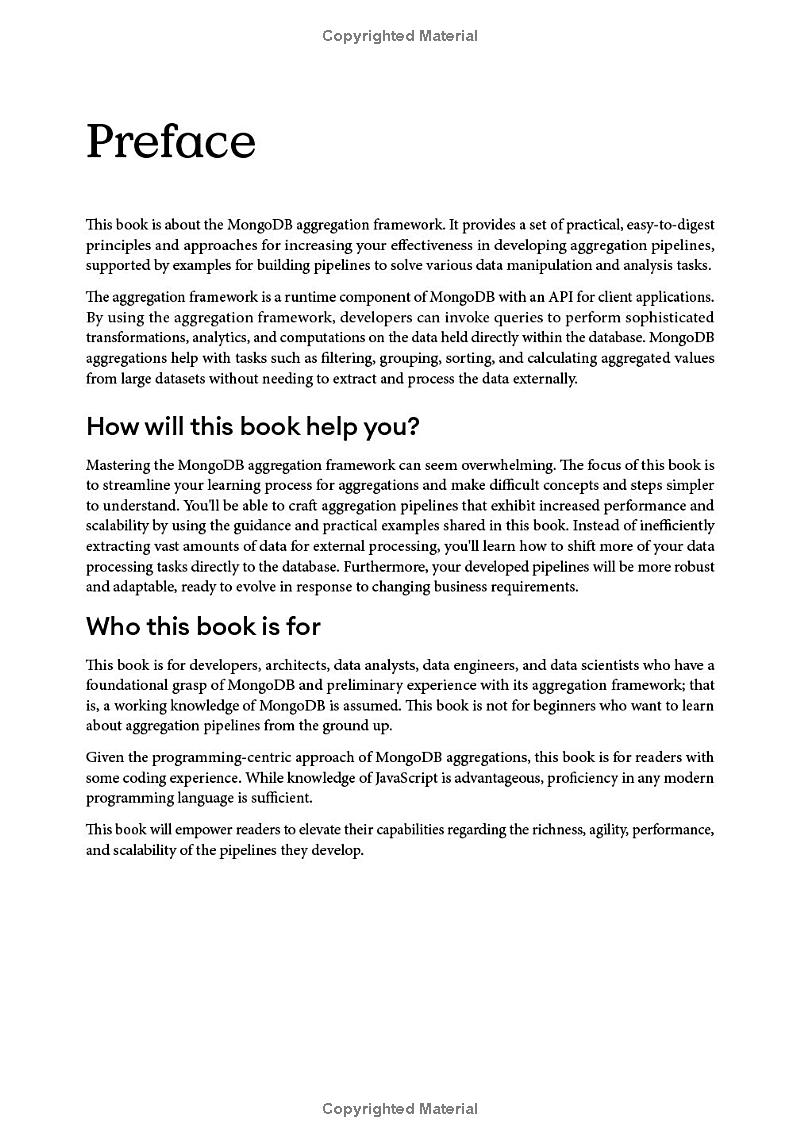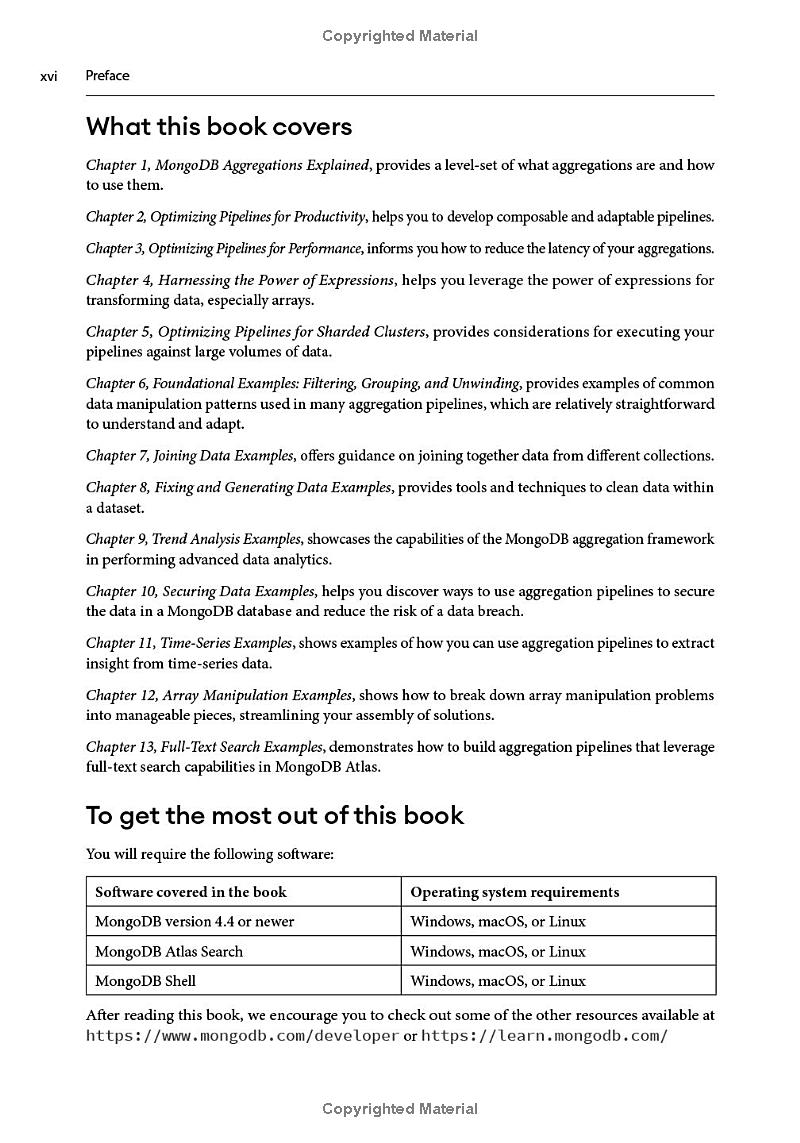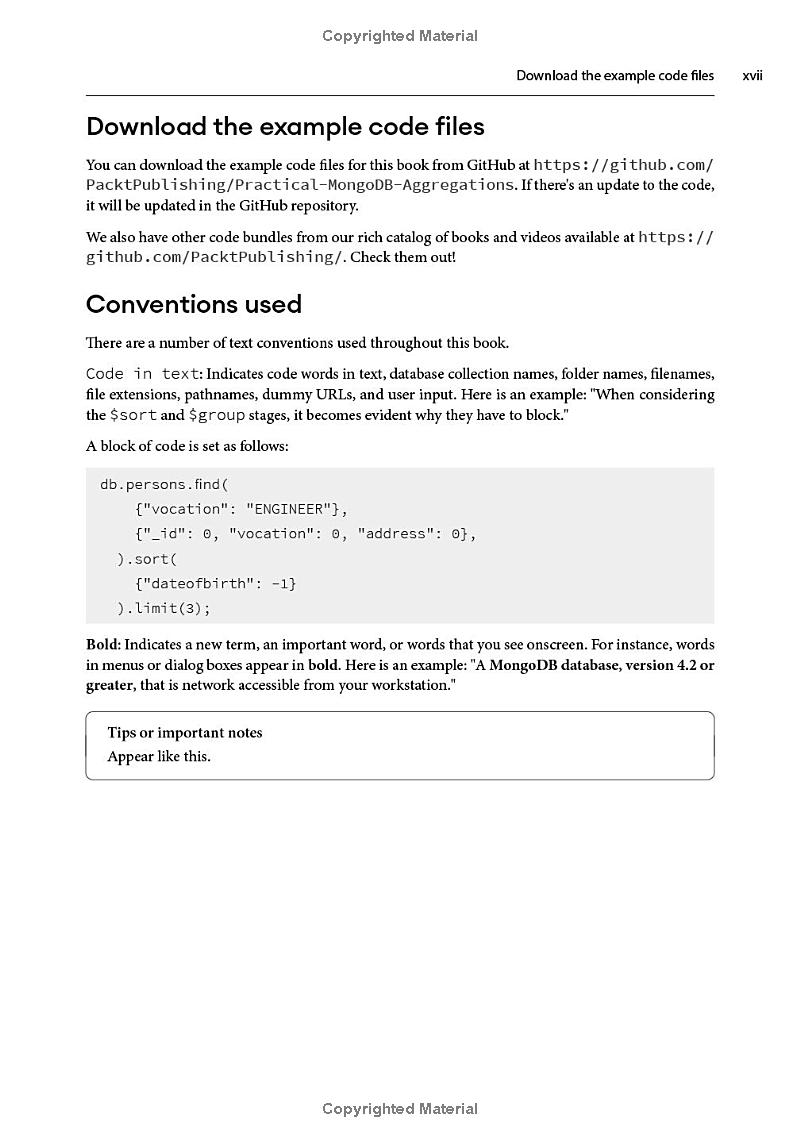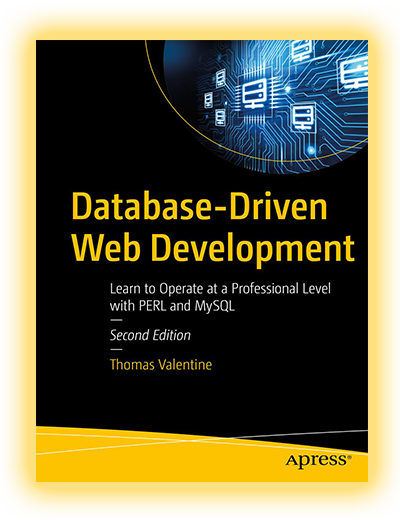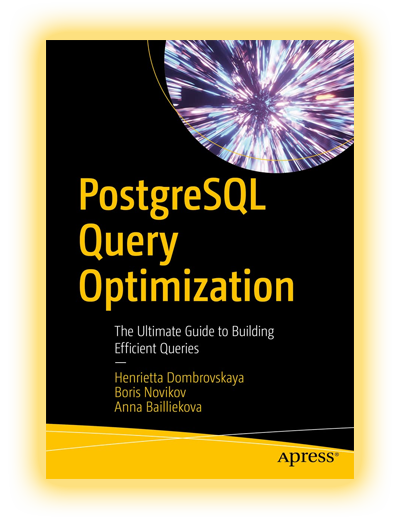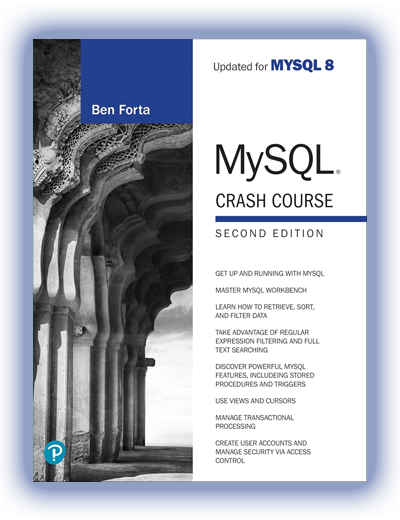The book "Practical MongoDB Aggregations" by Paul Done is considered the best practical guide to working with the MongoDB Aggregation Framework — a powerful tool for data processing and analysis in MongoDB. The author provides a step-by-step explanation of how to efficiently use aggregation to perform complex queries, analyze data, and generate reports. Through detailed examples and real-life scenarios, the book helps developers, analysts, and database administrators understand how to fully leverage MongoDB’s capabilities for handling large datasets.
Download the book "Practical MongoDB Aggregations" by Paul Done in PDF for free and start effectively using MongoDB Aggregations today!
What Will You Learn From the Book "Practical MongoDB Aggregations" by Paul Done?
By reading this book, you will gain a deep understanding of the Aggregation Framework in MongoDB and learn to apply it to data processing:
- Understanding pipelines and aggregation stages.
- Using operators like $match, $group, $sort, $project, and others.
- Performing data filtering, summarization, and grouping.
- Working with arrays and nested documents using $unwind and $lookup.
- Optimizing the performance of aggregation queries.
- Creating reports and analytics based on MongoDB.
Who is this Textbook for?
- Database developers. Those actively using MongoDB for processing large volumes of data.
- Backend developers. Developers looking to deepen their knowledge and optimize queries for MongoDB applications.
- Data analysts. Professionals needing to efficiently process and aggregate data.
- Database administrators. The guide helps optimize and monitor the performance of aggregation queries.
- Students and researchers. An excellent introduction to practical work with MongoDB.
More About the Author of the Book
The Developer's Opinion About the Book
Focused exclusively on MongoDB’s aggregation framework, this book teaches how to write powerful pipelines for analytics and reporting. Covers $lookup, $group, $facet, and performance optimization. After reading, you’ll process complex documents and nested data with ease. A key skill for NoSQL developers. Also includes optimization techniques for working with sharded clusters, nested arrays, and large-scale analytics pipelines in production.
David Harris, Database Administrator (DBA)
FAQ for "Practical MongoDB Aggregations"
1. What is the MongoDB Aggregation Framework?
The Aggregation Framework is a mechanism in MongoDB that enables complex data processing operations such as filtering, grouping, sorting, and calculations using pipelines and operators.
2. Is the book suitable for beginners?
Yes, the author explains the basics of the Aggregation Framework and gradually progresses to advanced scenarios, making the material accessible for both beginners and experienced developers.
3. What aggregation operators are covered in the book?
The book covers key operators such as $match, $group, $sort, $project, $unwind, $lookup, and $out, along with advanced operators for working with arrays and computations.
4. Can the Aggregation Framework be used for analytics?
Yes, MongoDB Aggregations are well-suited for analytical tasks, report generation, and data preparation for visualization.
5. How does the guide help with performance optimization?
The author focuses on optimization techniques, including using indexes, monitoring queries, and organizing efficient pipelines.
6. Can the examples from the book be adapted for commercial projects?
Yes, all examples and scenarios are based on real-world tasks and can be directly applied to developing commercial applications.
Information
| Author: | Paul Done | Language: | English |
| Publisher: | Packt Publishing | ISBN-13: | 978-1835884362 |
| Publication Date: | March 1, 2024 | ISBN-10: | 1835884369 |
| Print Length: | 278 pages | Category: | Database books |
Get PDF version of "Practical MongoDB Aggregations" by Paul Done
Support the project!
At CodersGuild, we believe everyone deserves free access to quality programming books. Your support helps us keep this resource online add new titles.
If our site helped you — consider buying us a coffee. It means more than you think. 🙌

You can read "Practical MongoDB Aggregations" online right now!
Read book online* →*The book is taken from free sources and is presented for informational purposes only. The contents of the book are the intellectual property of the author and express his views. After reading, we insist on purchasing the official publication on Amazon!
If posting this book in PDF for review violates your rules, please write to us by email admin@codersguild.net

